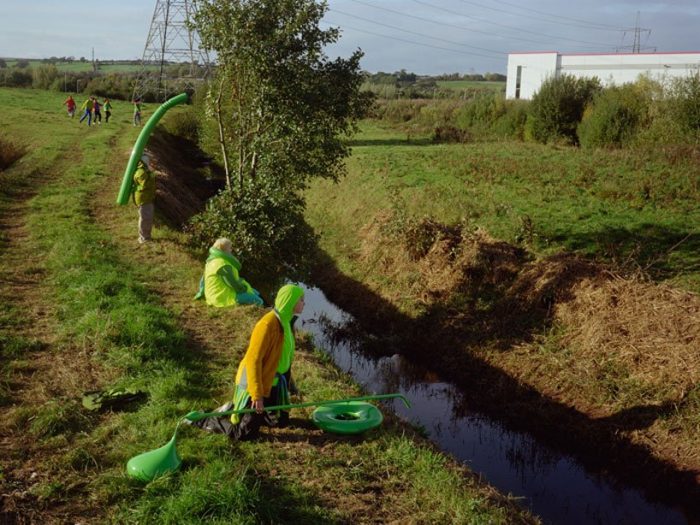Thoughtful Interaction Design: A Design Perspective on Information Technology by Jonas Löwgren and Erik Stolterman was for me an invigorating read which affirmed many of my personal beliefs regarding my role as an artist/designer, while also bringing in new perspectives on how we can approach design in a responsible way.
Something I notice among my peers in arts & design is that many of us tend to fall into an erroneous mindset that anything we design should just look visually beautiful, be fun to interact with or display our technological prowess. These are things which a viewer, whether they are from a design background or not, can easily judge upon first looking at or interacting with the product. Hence any project meeting these conditions will be met with much praise and fanfare, which may lead the designer to consider it a “successful” design. If that is all it takes for a design to be successful, however, then I believe it would actually be preferable to aim to become a designer who is unsuccessful but rather is thoughtful instead.
Being thoughtful is about caring for your own design ability, the designs you produce, and how the world will be changed by your design ideas and decisions. A thoughtful designer is someone who takes on design as a serious and important task and who tries to become a designer with the ability to create fascinating, authentic, and useful digital artifacts.
The designer who is lauded merely for creating beautiful/fun/technologically apt projects will find that as fads come and go, by repeatedly doing the same kinds of things their designs will eventually become old and lose the attention and praise it once garnered. The thoughtful designer, on the other hand, understands that their worth goes beyond “creating pretty things” and that they possess a vital skill that makes them responsible for the lives and wellbeing of all who encounter their design. They will strive to constantly educate and improve themselves to ensure that their designs will always contribute to the improvement of society.
The thoughtful designer sees her own ability as something that has to be designed. The thoughtful designer understands that theories, concepts, and ideas about design are practical intellectual tools. The thoughtful designer dares to challenge her own thinking and assumptions as a way to develop her competence and design ability.
This notion of design as a responsibility is reinforced later on in the design theory and process sections of the chapter. As designers we are direct agents in shaping and creating the tangible world that we live in, be it in a digital or physical landscape, hence it has a direct effect on all aspects of society. Only by understanding this can we understand why we have an immense responsibility under our belt to put thoughtfulness into our designs, allowing them to create positive changes in society.
One way in which we can practice thoughtful design which improves society is by using design as a tool for critique. Critical design (http://www.dunneandraby.co.uk/content/bydandr/13/0) is a design “movement” I was recently introduced to which I feel encompasses most if not all aspects of Löwgren and Stolterman’s writings on thoughtful design and design theory. Coined by design professors Anthony Dunne and Fiona Raby, Critical design takes a critical theory based approach to design, using design fiction and speculative design proposals to challenge narrow assumptions, preconceptions and givens about the role products play in everyday life. From my understanding of the assigned reading, the aims of thoughtful design is quite similar to that of critical design in that it addresses the role of the designer as a person who uses their design ability to induce change in social issues.
There are many good critical design projects which share the views stated in the reading, but one which many of us may recognise is Foragers by Dunne & Raby, which was exhibited at the Artscience Museum’s Human+ exhibit several years ago. It is a design project that is based off the food shortage problem that experts envision we will face as a planet in future years, based on current global trade and environmental trends. As such, the designers have designed these devices which they envision humans might design in the future, which will help them forage food and extract nutritional value from non-human foods using a combination of synthetic biology and new digestive devices inspired by digestive systems of other mammals, birds, fish and insects.

Augmented Digestive System

Algae Digester

Grass Processor

To me, this project is one that is truly shaping the world we live in. While future humans will probably not use such devices to forage food in their day to day life, it is a design project which will bring up questions of morals and ethics in viewers. It is challenging existing conceptions and restrictions that are based on common false assumptions that food shortage is a problem only faced by those living in poverty. The reading mentions client-based design and the fact that the designer is responsible for the result they produce and hand over to the client. In my view, seeing that it also states that designers have a responsibility to society due to our skills to change the world, then we should also see society and the world at large as a “client” and design to better their lives to the best of our ability.

You must be logged in to post a comment.